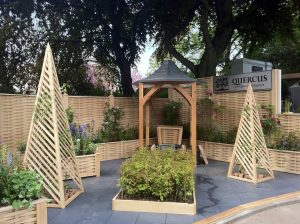26 Jul Working to Green Infrastructure Planning Guidance? – Our Fences Fit
What is green infrastructure?
Green infrastructure is a network of multifunctional green space, urban and rural, which is capable of delivering a wide range of environmental and quality of life benefits for local communities.
Green infrastructure is not simply an alternative description for conventional open space as it includes parks, open spaces, playing fields, woodlands, and also street trees, allotments and private gardens. It can also include streams, canals and other water bodies and features such as green roofs and walls.
Conserving and enhancing the natural environment
The components of green infrastructure exist within the wider landscape context and should enhance local landscape character and contribute to place-making. High quality networks of multifunctional green infrastructure provide a range of ecosystem services and can make a significant contribution to halting the decline in biodiversity.
At Quercus we not only make our oak panel products from untreated, durable, sustainably sourced oak, we have also designed our patented woven panel system to include a hedgehog holes. These open spaces in the panels enable hedgehogs to walk through and forage across gardens in urban and rural settings and enables them to cover more ground to find enough food to build up their body mass for successful winter hibernation. Being able to roam further afield also increases their breeding opportunities so that UK hedgehog numbers can return to sustainable numbers in the wild.
Quercus UK Ltd also help to increase biodiversity as we plant and donate oak saplings to grow the next generation Oak trees.
Oaks provide a habitat rich in biodiversity; they support more life forms than any other native trees. They host hundreds of species of insect, supplying many British birds with an important food source and in the autumn mammals such as badgers and deer take advantage of feeding from the falling acorns. Flowers and leaf buds of Oak trees provide food for the caterpillars of purple hairstreak butterflies. The leaves of English oaks breakdown with ease in autumn and form a rich leaf mulch beneath the tree, supporting invertebrates, such as the stag beetle, and numerous fungi, like the oakbug milkcap. Crevices in the tree bark are perfect nesting spots for the pied flycatcher or marsh tit and several British bat species may also roost in old woodpecker holes or under loose bark, as well as feeding on the rich supply of insects in the tree canopy.


